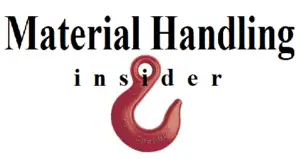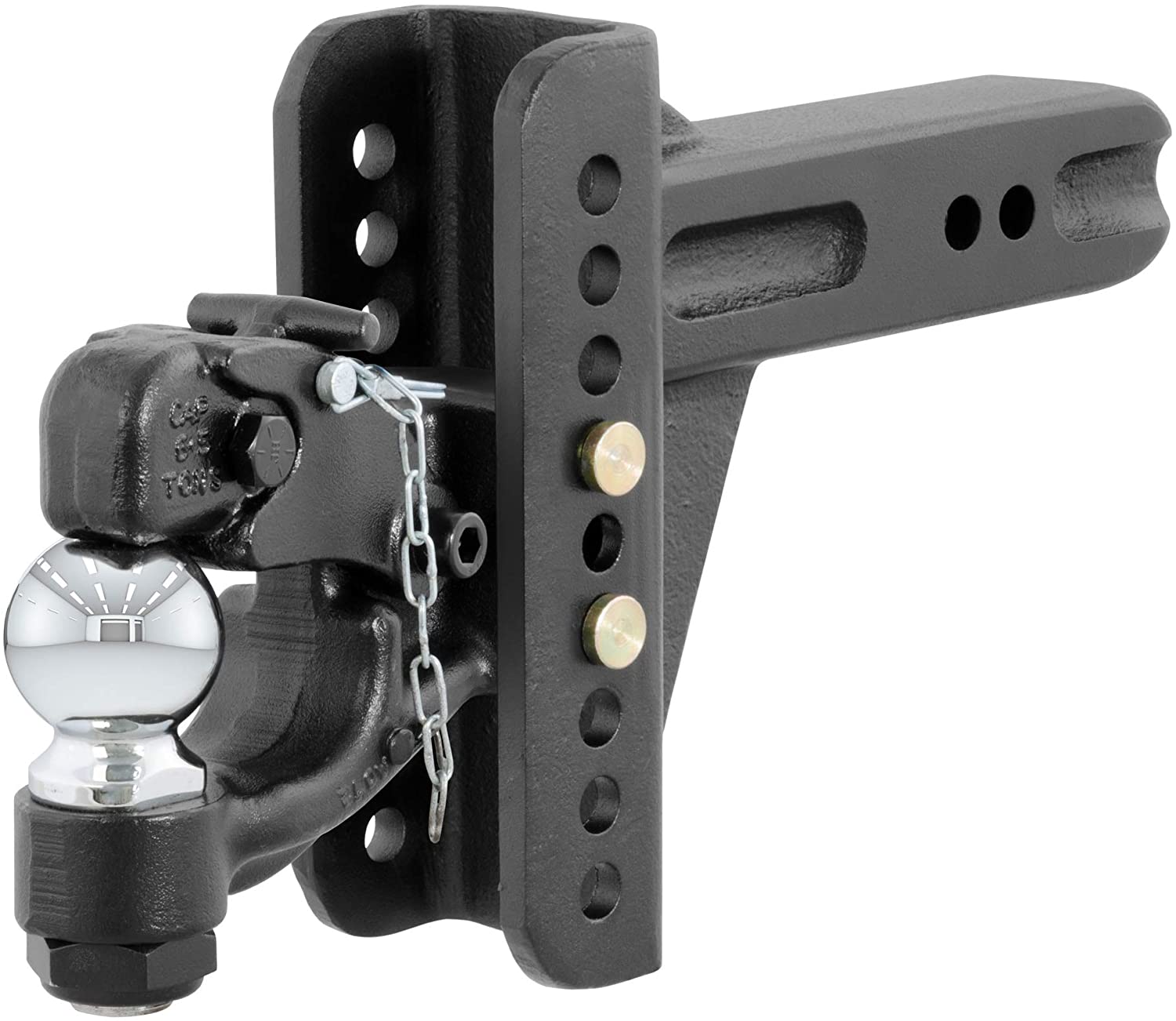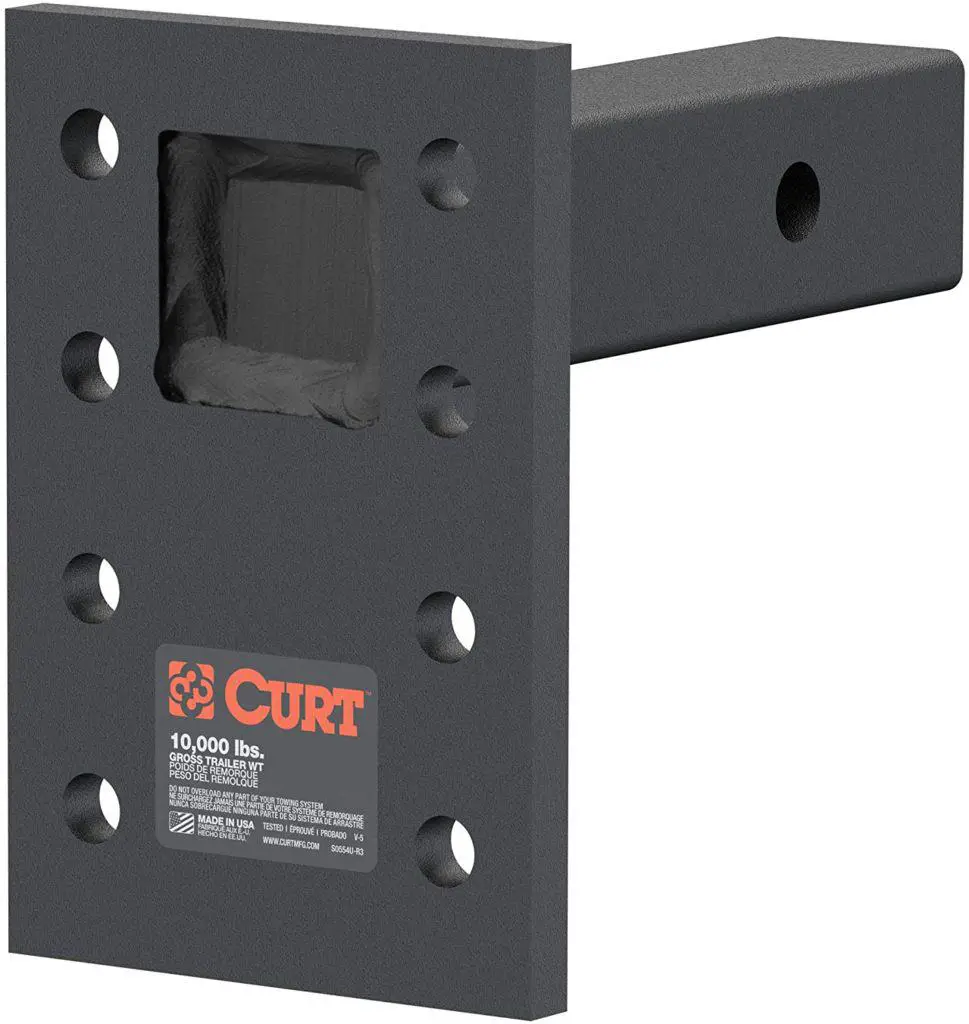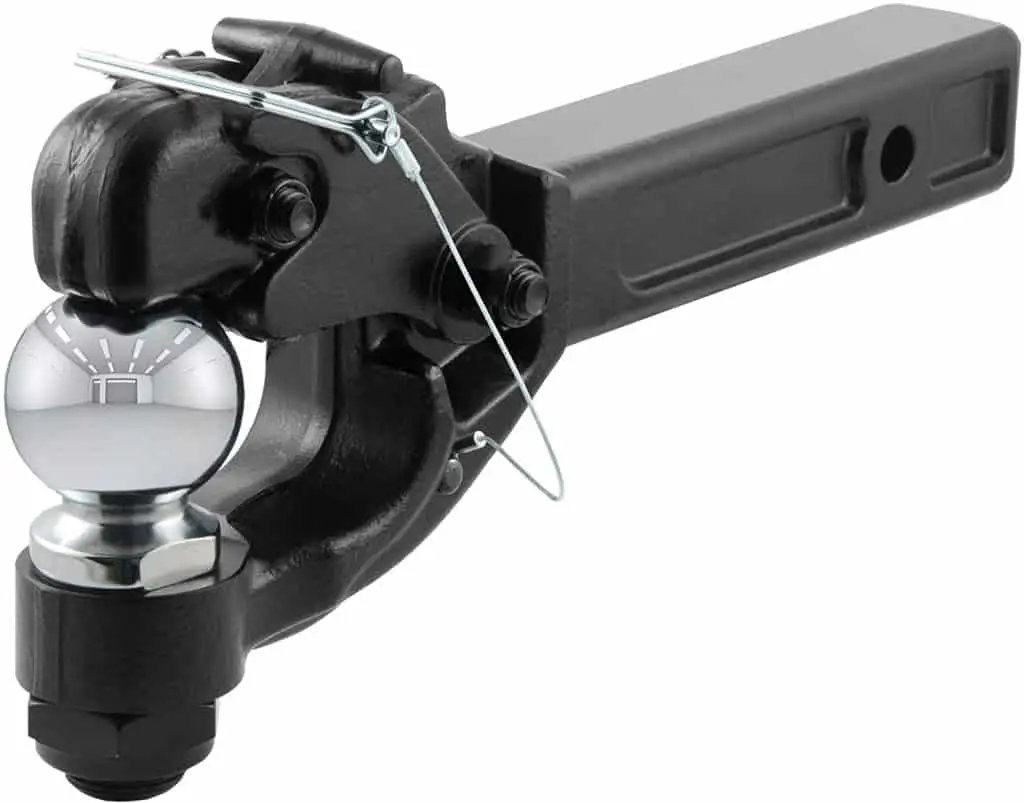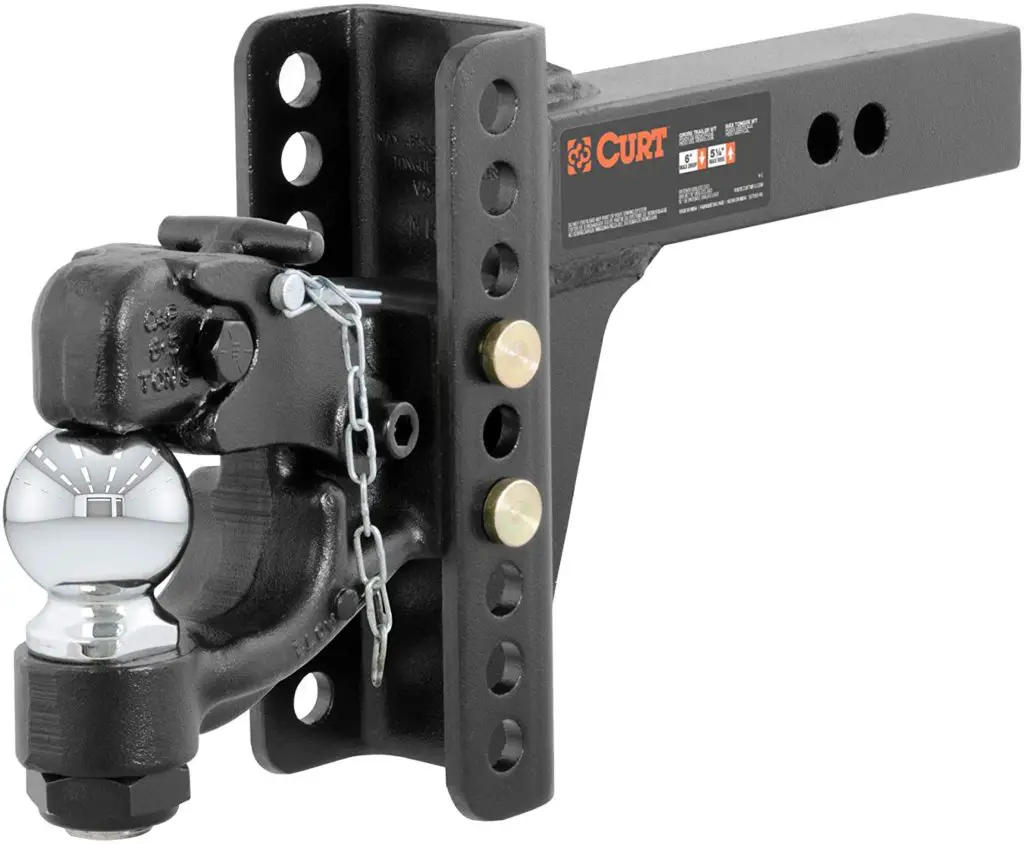When it comes to picking out the right Pintle Hitch for your towing application, you may find yourself overwhelmed with options, and not knowing what to do. In this article I will share my process for systematically breaking the question of “How do I choose the right pintle hitch for me?” I have used this process over the past 30 years as a designer of material handling equipment. Now you can use my experience to save you time, and guide you to the right solution for you. This article concentrates on vehicles and trailers that will be towed over public highways.
In its simplest form, the process for choosing the right Pintle Hitch for highway use follows these logical steps.
- Define your tow vehicle
- Define the trailers you plan to tow
- Define the characteristics of your tow
- Determine your mounting
- Analyze the information and pick out the “Right Pintle Hitch”
Going over your pintle hitch application.
Like any good problem solving technique, you need to start with “what you know”. The first step is for your to write down all the facts that you know about the application. Some of the questions that you would want to know the answer to may include, but not limited to
What is the towing capacity of vehicle you plan to use?
The towing capacity of a truck can sometime be found in the owners manual or sometimes in a sticker on the door jam. You can also do a little quick math. Subtract the vehicle curb weight, cargo, and weight of the passengers from the GCWR (Gross combined weight rating). This gives you the towing capacity. You may also be able to look it up online.
Formula is a follows: GCWR – (Cargo Weight + Passenger Weight + Curb Weight) = Max Towing Weight
Does this tow vehicle have a receiver hitch? If so, what size is it? What is its rated capacity?
In leu of knowing the rated capacity of the vehicles receiver, you can use the below mentioned approximations to help you with your calculations.
| Class Hitch | Receiver Size | Capacity (GTW) | Capacity (TW) | Used On |
|---|---|---|---|---|
| Class 1 | 1-1/4 x 1-1/4 | Up to 2,000 lbs | Up to 200 lbs | Cars and Crossovers |
| Class 2 | 1-1/4 x 1-1/4 | Up to 3,500 lbs | Up to 350 lbs | Cars, Cross overs & Mini Vans |
| Class 3 | 2 x 2 | Up to 8,000 lbs | Up to 800 lbs | Trucks, SUVs and Vans |
| Class 4 | 2 x 2 | Up to 10,000 lbs | Up to 1,000 lbs | Trucks, SUVs and Vans |
| Class 5 | 2×2 or 2-1/2×2-1/2 | Up to 20,000 lbs | Up to 2,500 lbs | Heavy Commercial Trucks |
What is the height of the receiver tube from the ground?
The measurement of the receiver tube, or coupler mounting above the ground will determine later if you need vertical adjustment to tow all of the desired trailers.
Will this tow trailers off of paved roads?
One detriment of towing trailers off of paved roads is the likelihood that the coupler could bind when traveling over un-even terrain. Depending upon the roughness that you will be towing over, there are two basic options.
For terrain like back yards, construction sites and gravel roads, a typical pintle lunette hitch would most likely suffice. There is a decent amount of play in that connection.
For terrain more like off-roading across steep hills, ravines across creeks and things of that nature, at least one of the couplers should be mounted in a swivel joint to allow the trailer to freely roll. A rolling trailer and a coupler system that does not allow for rolling may lead to the tow vehicle also rolling. A spring loaded hitch will help with the jerking and impacts that is associated with off-roading.
Make a list of the trailers that will need to be pulled.
The next logical step would be to make a list of all of the trailers that you intend to pull with the hitch. For that list, you would want to determine the trailer coupler type, the gross weight, the tongue weight, the tongue heights.
After making the list, we will then want to determine from the list what the maximum trailer weight will be. Personally I like to add 10% to my answers to be safe. For example if the maximum weight of all of the subject trailers is 9,800 lbs, I would at 10% (980 lbs) to that number to get 10,780 lbs. You can also just multiply the original number (9,800) times 1.1, which represents 110% of the original number.
We will also want to determine the coupler height range that will be needed to accommodate all of the trailers. For example if one trailer has a height of 18″ from coupler to the ground, and the second has a height of 20″ from coupler to the ground, then the trailer height range is 18″ to 20″. Please note all dimensions should be taken with trailers in a near horizontal position.
We also need to determine if you need just a pintle hitch, or if you also have some ball socket couplers in which to couple with. If you need to mate with both ball hitches and pintle hitches, you have a choice. You can choose to have both ball couplers and pintle hitches mounted to a receiver shank or you may choose to go with a pintle / ball combo coupler.
Determine how the hitch is going to be mounted.
For vehicles used to tow trailers for highway use, they typical use receiver tubes to mount their hitches. The other option would be rigidly mounting it to a plate mounted to the vehicle.
The main advantage to receiver mounted hitches is the versatility to quickly change them. You can also remove the hitch when not in use.
The main advantage to a plate mounting is that the coupler is always there when it is needed.
Analyze your information and come to a conclusion.
One of the first questions that needs to be answered when analyzing your application is does your towing vehicle have the capacity to pull the trailers that you intend to tow? If it does not, then it is time to recalibrate your intentions.
Along those same lines you need to determine if the mounting has a rated capacity that can withstand towing the intended trailers. If it does not, you may need to think about replacing your coupler mounting.
The next thing you need to do is determine how much/if any drop or raising of coupler need to happen. For example a receiver that is 24 inches above the ground and a trailer that is at 18″ would dictate a 6″ drop with the hitch. Below is an example of a Pintle drop mount. It is a Curt 48323 with a 10,000 lb rating, 2″ square shank that is 6″ long and has a 6-1/2″ drop.
If you need both a pintle hitch and ball couplers, you will need to decide if you want to accomplish that by changing out couplers through the use of a receiver, or if you want to use a receiver mounted pintle/ball combo like shown below. Shown below is a Curt 48006 which has a 2″ shank, the Pintle is rated at 16,000 lbs and a 2-5/16″ ball rated at 12,000 lbs.
Choosing the most versatile pintle solution
For those of you who do not know the trailers that you will be towing, and you want the most versatile solution available, then boy do we have a couple solutions for you. The thinking behind this solution is to try to cover as many variations as possible, while staying within the confines of your tow vehicle. There is basically 2 different solutions, one for a truck with a 2″ X 2″ receiver tube, and one for a truck with a 2-1/2″ x 2-1/2″ receiver tube.
In both cases we will be using a drop channel mount with a pintle ball combination coupler. The drop channel mount will allow for quick vertical adjustments using 2 clevis pins to hold the couplers position.
The cool part about the channel drop is that it can be flipped over to give the coupler a rise also. So for example a 6″ drop can be flipped over and give you about a 5″ rise also. This almost doubles the amount of vertical adjustment that the hitch has.
The Pintle / Ball Combination Hitch can be quickly removed and replaced with a double ball hitch for quickly changing ball sizes.
The smaller of the two options is the Curt 49507 channel mounted combination pintle hitch with a 2″ shank. The channel allows for a 5-1/4″ rise and a 6″ drop. The combination pintle ball hitch is equipped with a 2-5/16″ ball rated at 13,000 lbs. Shipping weight is 36 lbs.
The larger of the two options is the Curt 49508 channel mounted combination pintle hitch with a 2-1/2″ shank. The channel allows for a 5-1/4″ rise and a 6″ drop. The combination pintle ball hitch is equipped with a 2-5/16″ ball rated at 20,000 lbs. Shipping weight is 42 lbs.
